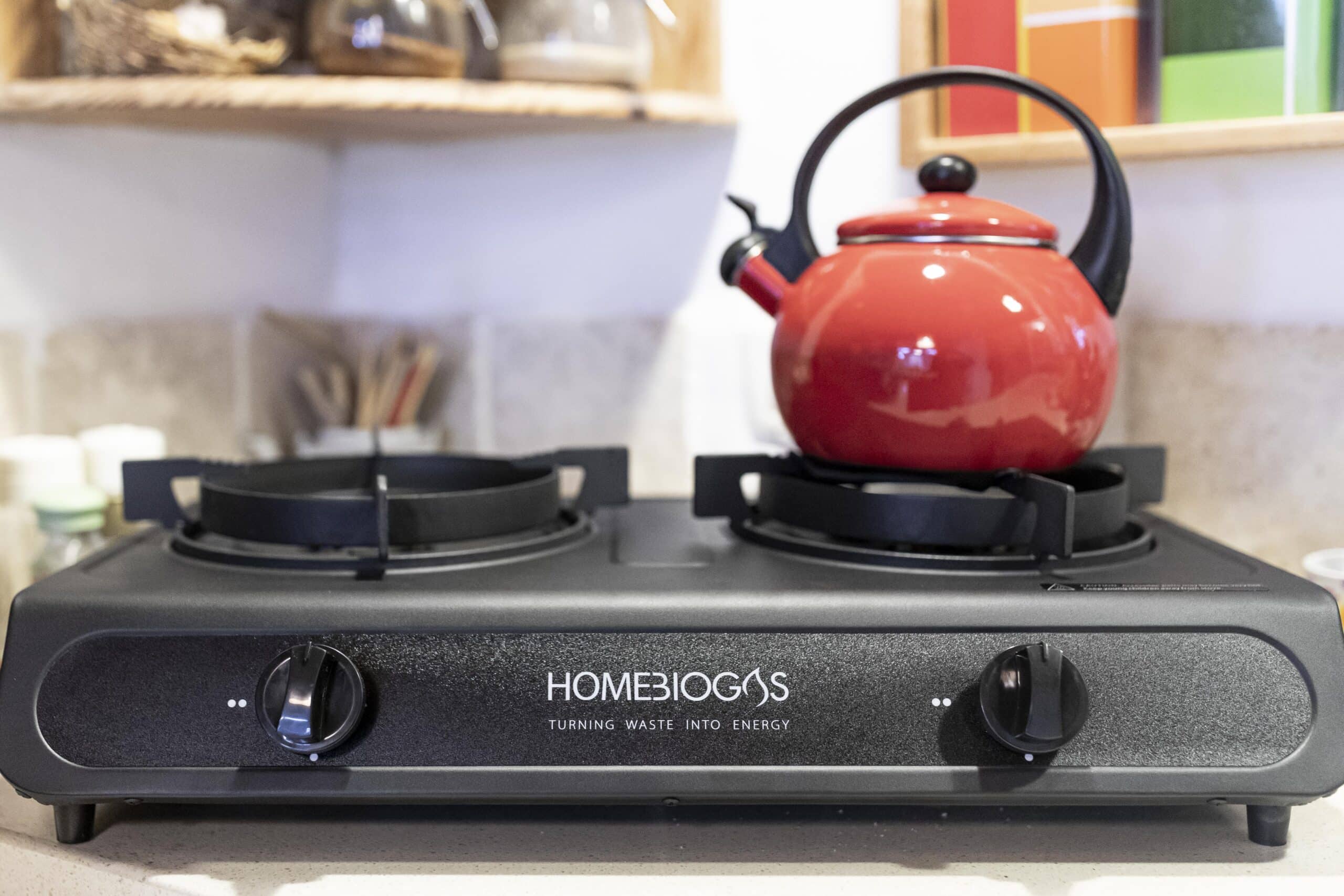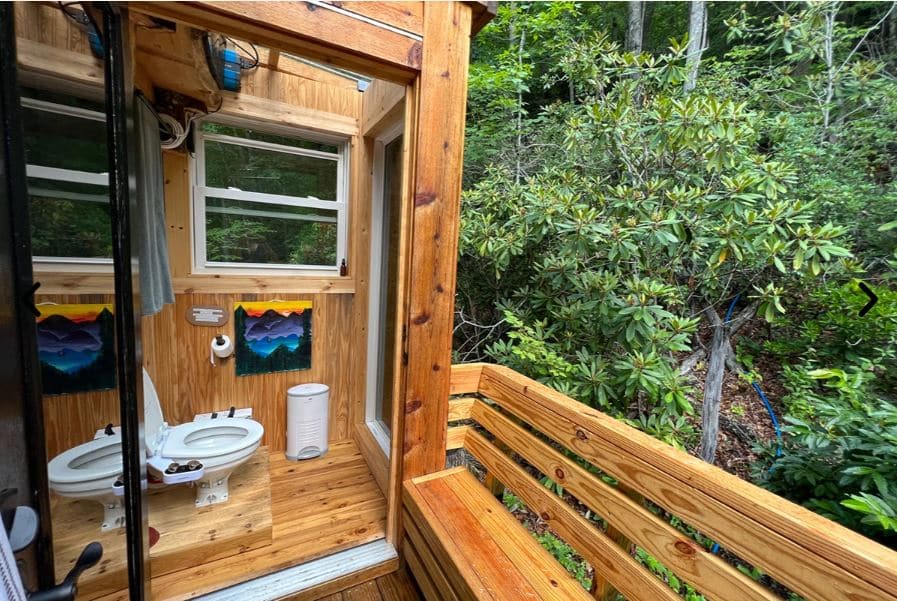
How does a waterless composting toilet work?
Waterless toilets for the home look like traditional toilets. However, below the toilet pedestal, a small compost chamber collects the solid waste, while the liquids are either directed to a separate container or evaporated. Usually, an electric fan continuously circulates air through this closed container to speed up the composting process and eliminate odors.
Alternatively, if you have a more complex system (also known as a split system composting toilet), the tank is below the floor and is connected to the pedestal through a waste chute system. This way, the waste is stored further away from the toilet. These systems are typically implemented in locations with more bathroom users because they have a bigger capacity.
An effective composting toilet creates the ideal environment for aerobic microorganisms to decompose the waste:
- The temperature must be between 104° and 122°F (40-50°C) — some models will require a temperature that reaches 170°F (77°C).
- The moisture content in dry composting toilets should stay between 50 and 60% by weight — sometimes 40%.
- It must maintain a 30:1 carbon: nitrogen balance by adding carbon-rich materials such as straws or sawdust.
The key is to keep the composting toilet slightly wet but not soggy because too much moisture can suffocate oxygen-breathing bacteria. That’s why most composting toilets include ways to separate liquid waste. Thermostats, sensors, automatic mixers, and other devices may help maintain temperature and chemical balance.
How to empty a waterless composting toilet?
The model of the waterless composting toilet system you select will ultimately determine how to unload your composting toilet — for a straightforward, safe process, make sure you follow the manufacturer’s instructions for emptying and maintaining the system.
How to empty a self-contained waterless system:
- Some dry composting toilets have two composting chambers — when one is full, you set it aside to continue composting while you can use the second chamber. This way, the first chamber’s contents can be thoroughly composted before you place the compost in your garden.
- Other composting toilets come with a tray at the bottom, so you can easily pull it out and remove the residue. Depending on the frequency of usage, you may only need to empty the tray every few months. In these continuous-cycle composting toilets, you’ll remove a soil-type product you can use in the garden or a worm farm.
- The small models used in motorhomes and boats use bio bags — small bags that can be located within the toilet and then thrown away in general waste cans.
How to empty a split system composting toilet:
- Drag the full chamber out for systems with mobile chambers and let the composting process continue while you use a new container.
- Some systems have a compost removal outlet, so you can quickly empty the tank when the composting process is completed.
- If you have a buried chamber, open the hatch and empty it using a shovel and a wheelbarrow because the compost might be hefty.
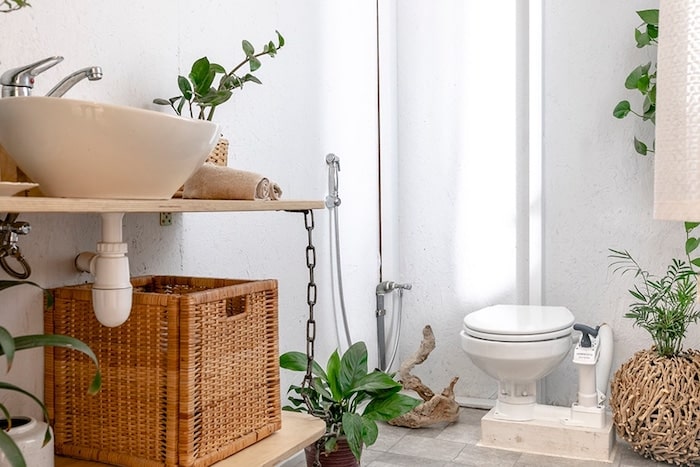
HomeBiogas Bio-toilet
Designed for the next generation of green innovation.
All dry composting toilets require following the same rules for emptying and cleaning.
- Take care not to spill any contents when you remove the composting chamber from the toilet.
- Wear latex, rubber, or protective gloves when handling the compost.
- Wear a dust mask when removing the residues from a waterless composting toilet system.
- Make sure the compost is mature before releasing it into the soil — it takes about 12 months to turn organic waste into compost through aerobic digestion.
- Wash your hands and clothes after emptying the waterless composting toilet.
- After emptying the composting chamber, clean it with a light soap and water solution before reinstalling it.
You can spread the fully composted waste in your yard or garden or add it to a more extensive composting system. The waste must be put in a composting bin or tumbler to continue decaying if it still needs to be completely composted.
Pros and cons of waterless composting toilets
Advantages of waterless toilet options:
- They’re eco-friendly solutions that reduce water and energy usage. Since they don’t produce wastewater, they don’t cause sewage pollution, generating significantly lower greenhouse gases than traditional toilets.
- These systems recycle waste to create organic compost and fertilizers.
- Most waterless toilets for homes are simple to use, install, and maintain long-term.
- These toilets have compact designs, making them ideal for mobile homes and small spaces.
- With no need for a water supply or a sewage hookup, waterless toilets can eventually be more cost-effective.
Disadvantages of waterless toilet options:
- Ongoing maintenance, including replacing ventilation filters, is required to keep away odors.
- Your guests might not enjoy the experience.
- Dry composting toilets have a limited capacity for storing waste, so they must be emptied regularly.
- Upfront costs are often required when shifting from traditional to dry systems.
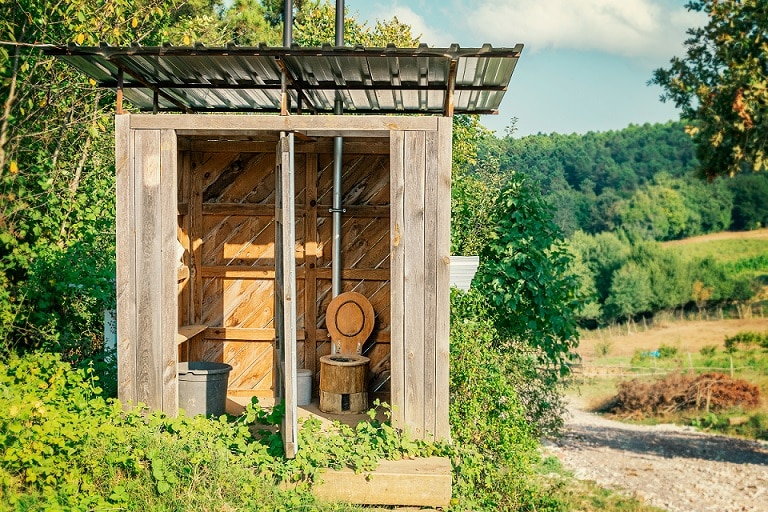
Do dry composting toilets smell?
A well-maintained waterless composting toilet doesn’t smell, as odors are continuously sucked down and out of the system. The scent of good compost is similar to that of new garden soil, and the same is true for a composting toilet that works properly.
The beneficial bacteria in the composting chamber eliminate harmful pathogens that carry diseases. Moreover, whether you opt for an aerobic or anaerobic system, you won’t have to deal with gases that give pit toilets their characteristic sewage smell.
On the other hand, the vent may have a mildly unpleasant smell. So, choose an out-of-the-way position for it when you install the system.
What if the waterless composting toilet or the outdoor vent emanates pungent smells?
That’s an indication that there is a problem with the system as a whole — most often is a blockage of the venting system or fan or an imbalance in the waste chamber (too much or too little moisture, or not the right carbon: nitrogen ratio).
Best waterless composting toilets to consider
- HomeBiogas bio-toilet kit
The HomeBiogas Bio-toilet kit can be installed in an outhouse for increased comfort. It also includes a biodigester where waste is stored and treated. This toilet solution uses anaerobic digestion to break down organic waste and transform it into biogas and treated effluent for the soil. You can use the biogas produced for cooking, while the treated effluent can nourish your soil and garden. HomeBiogas Bio-toilet kits are designed to be easy to install and use. The HomeBiogas system connected to the toilet is available in three sizes, the smalles size has the ability to produce up to two hours of cooking gas daily, and is suitable for households with up to six individuals.
In addition, the HomeBiogas Bio-Toilet looks and feels just like a regular toilet, making it a seamless addition to any home.
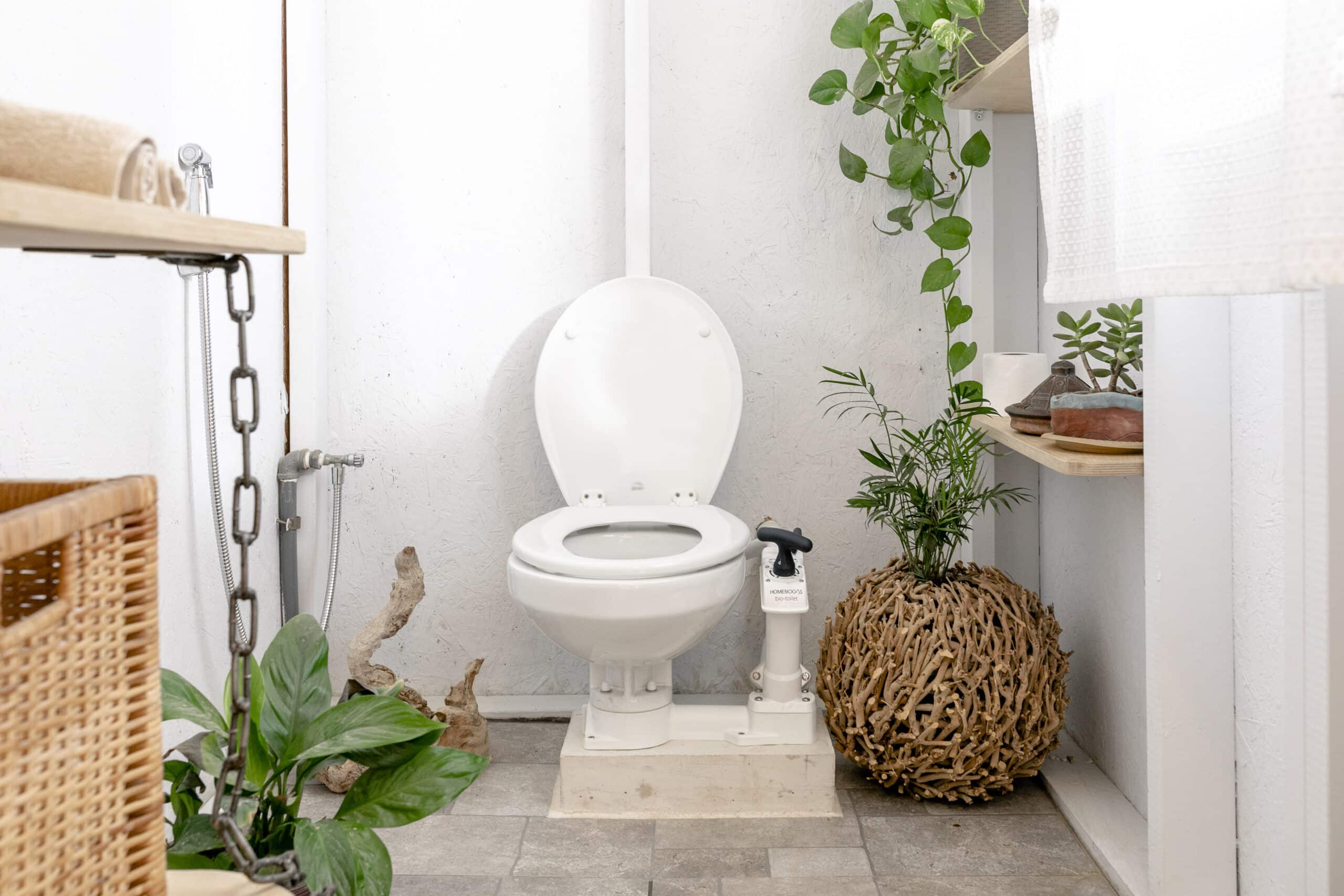
- Nature’s Head self contained composting toilet
The Nature’s Head self-contained composting toilet is a small dry composting toilet created for mobile homes and small spaces. The toilet separates the liquids from solids, and the compost area uses a fan to vent the chamber. Thanks to the consistent airflow, the toilet doesn’t emanate odors.
The system is relatively quiet and uses small amounts of electricity. The urine container needs emptying every other day, while the composting chamber can hold up to 80 usages.
The downside? The system can be expensive and unsuitable for large families.
- OGO composting toilet
The OGO composting toilet is one of the best waterless toilets for vans and motorhomes. The toilet’s compact design makes it comparable in size to an airline toilet.
The system has a trap door urine diverter and uses an electric solids agitator to mix waste efficiently. When using the toilet, you must open the solids door and then sit down because a sliding door seals the solids chamber.
The toilet has lights to let users know when it’s time to empty the contents. The composting chamber requires peat moss or other carbon-rich materials.
The downside? The compact design is great for mobile homes but not for large ones. Moreover, it might be too small for some users, so sitting on it is not always comfortable.
- Poo Pod waterless composting toilet
The Poo Pod waterless composting toilet is one of the waterless toilet options that don’t require plumbing or a septic system for waste management. It uses an electric fan to reduce unpleasant odors and includes an automated peat-spreading system.
According to the manufacturer, the large tank requires fewer cleanouts than most waterless toilets. Moreover, the system is built to let liquids run off into the back, eliminating the need for a tank that requires regular emptying.
The downside? Liquids are eliminated outside through a liquid drain system — the version for mobile homes comes with a urine catchment diverter.
- Separett Villa 9215 AC/DC
The Separett Villa 9215 AC/DC is a wall-mounted dry composting toilet suitable for all locations, from campers to compact homes. It doesn’t require running water. The system includes a single-speed fan to support venting up to 20 feet. All parts needed for direct vent and drain applications are included.
The toilet uses biodegradable liner bags to store solid waste and paper. The vent fan draws air over the composting area, helping to dry the waste and remove odors. An average family must replace the compostable liner bag every three weeks. The toilet is suitable for large families and works well in hot weather.
The downside? The system is more expensive than most other waterless toilets for homes. Some users reported issues with the fans.
Final Thoughts
Water is a valuable resource that we rely on for many different purposes, including waste management. However, traditional flush toilets consume large amounts of water, with estimates suggesting that over 360 billion gallons of water are used for waste management. While low-consumption flushing toilets have helped to reduce consumption, there is still room for improvement.
One solution is to use waterless composting toilets, which require little to no water for flushing. These toilets can be a great option for people who live off the grid and want to conserve water, reduce their environmental impact, and improve their health and sanitation. Moreover, waterless composting toilets offer multiple benefits and are a good choice for anyone looking to use water more efficiently and sustainably.
